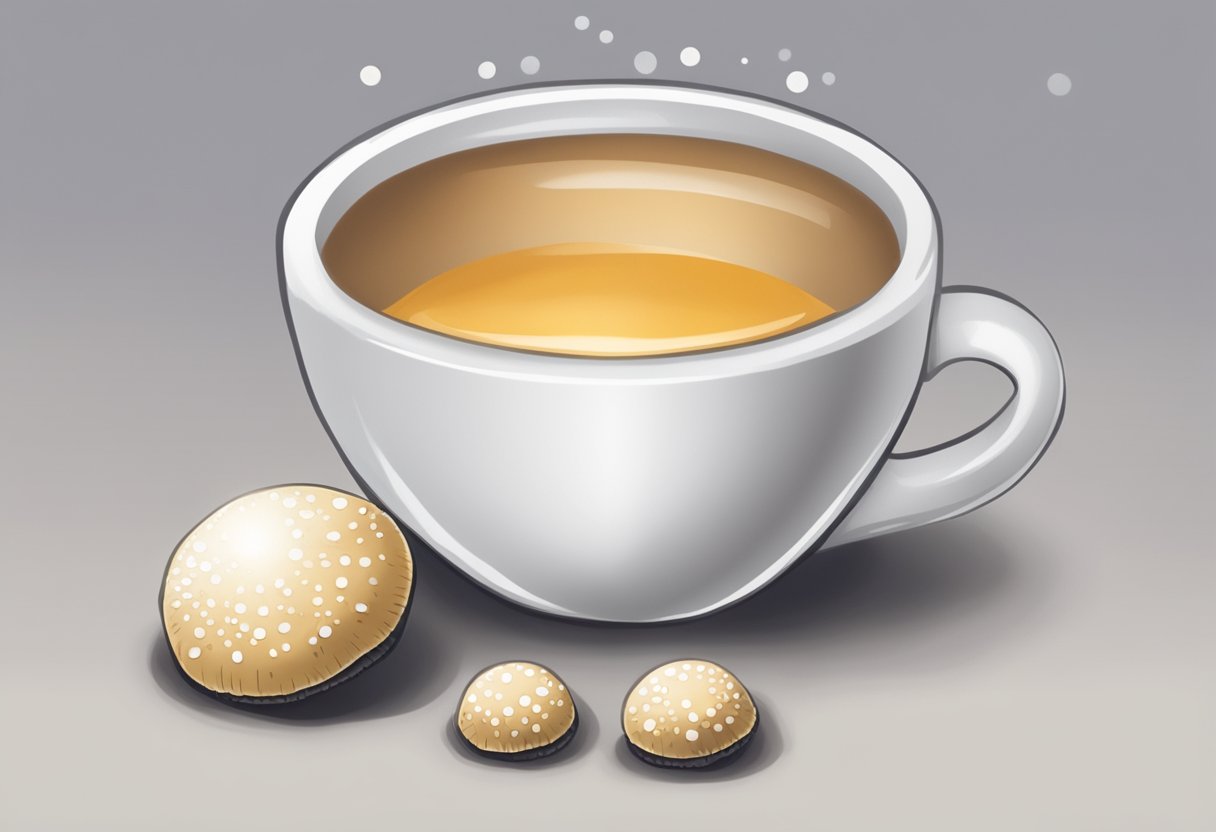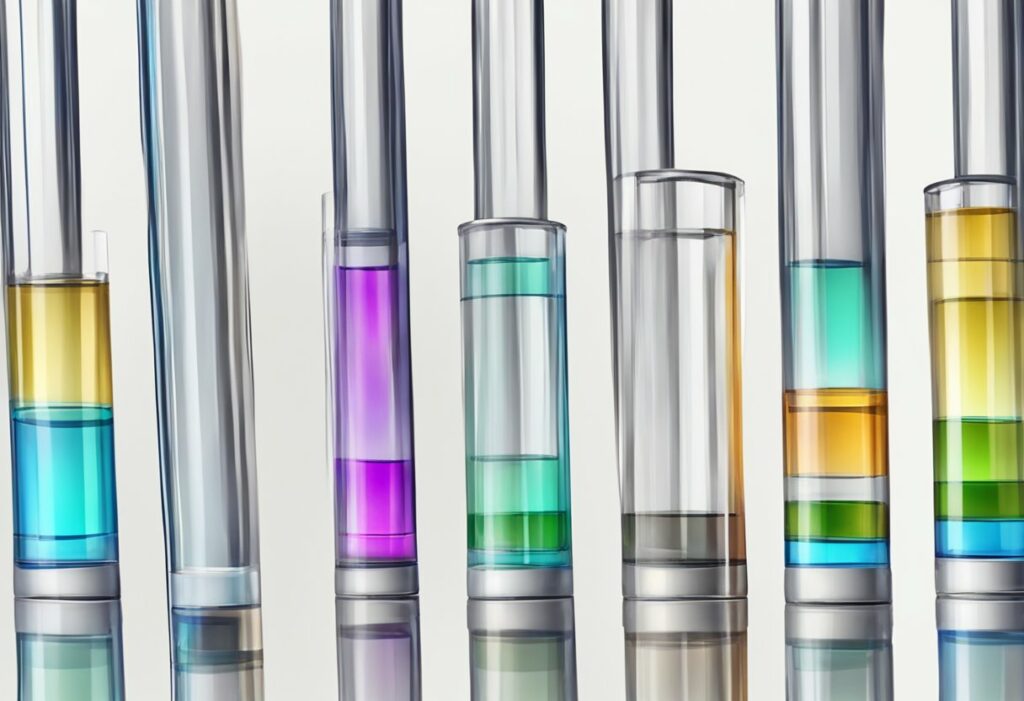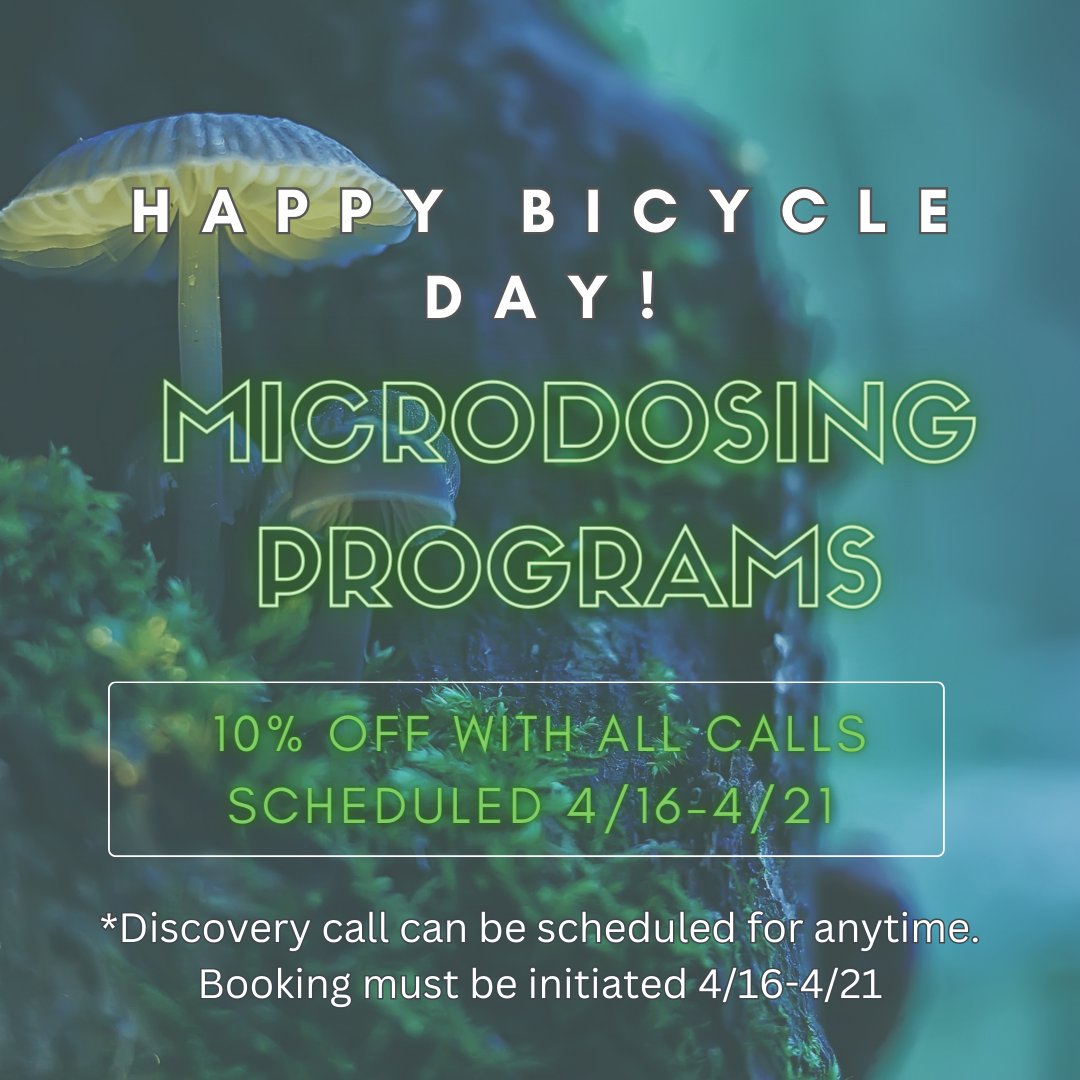Psychedelic mushrooms, commonly known as “shrooms,” contain the psychoactive compound psilocybin, which can lead to altered perceptions, hallucinations, and a range of other effects. With the increasing popularity and decriminalization of shrooms in some regions, there is a growing concern about their potential impact on drug testing procedures. One might wonder if shrooms can be detected in drug tests and how long they remain detectable in the body.
Standard drug tests, such as those used by employers or law enforcement agencies, predominantly focus on common illicit substances like cannabis, cocaine, opiates, and amphetamines. However, these tests rarely screen for psilocybin or other psychedelic compounds. Even so, specialized tests for detecting psilocybin do exist, and their use depends on the circumstances and reasons behind the testing.
Key Takeaways
- Shrooms contain the psychoactive compound psilocybin, which can lead to altered perceptions and hallucinations.
- Standard drug tests generally do not screen for psilocybin, but specialized tests for this compound are available.
- The use of specialized tests for detecting psilocybin depends on the circumstances and the purpose of the drug testing.
The Basics of Shrooms
Shrooms, commonly known as magic mushrooms, are a type of fungi that contain the psychoactive compound psilocybin. These mushrooms are found in various species and are widely recognized for their hallucinogenic effects. When consumed, psilocybin mushrooms can induce a range of mind-altering experiences, making them a popular choice among users looking for a psychedelic experience.
Over 200 species of mushrooms contain psilocybin, with some of the most well-known being Psilocybe cubensis, Psilocybe semilanceata, and Psilocybe azurescens. These species, along with several others, can be found across different parts of the world. They thrive in various climates and are known for their characteristic appearance, typically featuring a slender stem and a cap that ranges from conical to flat as the mushroom matures.
The primary psychoactive component in magic mushrooms is psilocybin, a naturally occurring compound that gets converted into psilocin when ingested. Both substances act on the brain, specifically binding to serotonin receptors. This interaction is responsible for the psychedelic experiences commonly associated with shrooms, such as visual and auditory hallucinations, unique insight, and heightened emotions. The intensity and duration of these effects depend on factors such as dosage, individual sensitivity, and the specific mushroom species consumed.
Magic mushrooms have a long history of use in traditional spiritual and healing practices, particularly in indigenous cultures. However, they are classified as a Schedule I substance in the United States, meaning they are deemed to have a high potential for abuse and no accepted medical use. Despite this classification, recent studies have shown promising results in using psilocybin for the treatment of conditions such as depression and anxiety.
In conclusion, shrooms are a unique and potent psychedelic drug, derived from various mushroom species containing the psychoactive compound psilocybin. Their effects on the human mind continue to intrigue researchers and users alike, leading to a growing understanding of their potential therapeutic applications.

Drug Testing 101
Drug testing is a common practice used by employers, law enforcement, and medical professionals to determine the presence of substances in a person’s system. There are several types of drug tests available, including urine tests, hair tests, blood tests, and saliva tests. Each test has its own set of advantages and limitations, depending on the substances being tested for and the desired level of accuracy.
Urine drug tests are the most common form of drug testing. They are relatively easy to administer and are typically used for detecting recent drug use. Urine tests can identify a wide range of substances, from common street drugs to prescription medications. A standard five-panel test checks for the presence of five major drug categories, such as amphetamines, cannabinoids, cocaine, opiates, and phencyclidine. On the other hand, a more comprehensive 10-panel drug test includes additional substances, like barbiturates, benzodiazepines, methadone, and propoxyphene.
Hair follicle testing offers the advantage of detecting substance use over a longer period, typically up to 90 days. This type of test analyzes the hair shaft for traces of drug metabolites. Hair tests are more challenging to manipulate and provide a more extended detection window than urine tests. However, they might not detect recent drug use since it takes time for the metabolites to appear in the hair.
Blood tests are the most invasive form of drug testing and often reserved for specific situations, such as accidents or medical emergencies. These tests provide the most accurate results, detecting not only the presence of the substance but also the amount consumed. However, blood tests have a shorter detection window and can be expensive and time-consuming to perform.
Saliva tests are a less invasive and quicker form of drug testing. They can be administered on-site, providing immediate results. Saliva tests are typically used to detect recent drug use, as substances tend to remain in the saliva for a shorter period than in urine or hair. However, these tests may be less sensitive than other methods, leading to the possibility of false negatives.
In conclusion, the type of drug test used depends on the specific needs and circumstances surrounding the testing. It is important to note that specialized tests may be required to detect certain substances, such as magic mushrooms, which can be challenging to identify using routine drug tests. Understanding the different testing methods and their limitations is essential for accurately interpreting results and making informed decisions.
Shrooms and Drug Tests

Magic mushrooms, commonly known as “shrooms”, contain the psychoactive substance psilocybin, which the body metabolizes into psilocin. Drug tests can detect traces of psilocin and its metabolites in a person’s system. The detection time and window for shrooms’ presence in a drug test vary depending on factors like metabolism, frequency of use, and the type of drug test conducted.
The half-life of psilocybin and psilocin in the body is relatively short. Usually, psilocin is no longer detectable within 24 hours of consumption. However, the detection window may extend in cases of chronic or heavy use, where psilocybin and its metabolites may remain traceable for a more extended period.
Different drug tests have varying detection abilities when it comes to shrooms:
- Urine tests: Most standard urine tests do not screen for psilocybin or psilocin. However, specialized urine tests can detect psilocin up to 1-3 days after ingestion. Heavy users may present detectable levels for a longer period.
- Blood tests: Psilocybin and psilocin can be detected in blood tests within a short timeframe, usually within 5-24 hours after consumption. However, these tests are less common than urine tests.
- Hair tests: Although less frequently used, hair tests can detect psilocybin and psilocin metabolites for a more extended period, sometimes up to 90 days after use. This test has the highest detection window of the three types mentioned.
It’s important to note that false positives can occur with certain drug tests, which may result in a person testing positive for a specific substance despite not having ingested it. However, this is uncommon with shrooms, as specialized tests are required to detect psilocybin and psilocin.
In summary, drug tests can detect shrooms, particularly through specialized urine and hair tests with extended detection windows. The detection time varies based on the individual’s metabolism and the frequency of use. While false positives are possible, they remain relatively rare in the case of shroom testing.
Factors Influencing Test Results
Several factors influence the detection of shrooms or psilocybin in a drug test. These factors may contribute to the varying results and detection times for individual users.
Age is one factor that can impact drug test results. With age, the body’s metabolism slows down, meaning older individuals may take longer to eliminate substances from their system compared to younger people.
Race may also play a role in drug test results, with some studies suggesting that certain genetic factors can affect how different individuals process drugs.
Body composition affects how long psilocybin stays in one’s system. Individuals with a higher percentage of body fat may retain substances longer, as fat cells can store drugs.
Dose and type of mushrooms impact the concentration of psilocybin in the system. Ingesting a high dose or a more potent type of mushroom would lead to higher concentrations in the body, possibly increasing the detection window.
Personal tolerance level may affect how long psilocybin stays in the system. Frequent users may metabolize the substance more quickly, leading to faster elimination.
The preparation method and form of the mushrooms can potentially affect the absorption of psilocybin. For instance, brewing the mushrooms as tea may lead to quicker absorption and elimination compared to ingesting them whole.
Food or drink taken with the mushrooms can also impact test results. Consuming shrooms with a large meal may slow the absorption of psilocybin, thus affecting detection times.
Disorders in the kidney can alter how the body processes and eliminates psilocybin. Kidney disorders may lead to slower drug elimination, extending the detection window.
Lastly, the potency of the shrooms can vary and depends on factors such as species and growth conditions. Potency influences the amount of psilocybin in the system, which may impact the detectability of the substance in a drug test.
Impact of Substance Use
Substance use, particularly hallucinogenic substances like magic mushrooms, can have various effects on an individual’s perception, thought, and mood. When consuming these substances, users often experience hallucinations, altered states of consciousness, and changes in perception and behavior1. Additionally, they may encounter moments of intense emotional and sensory experiences.
Magic mushrooms contain psilocybin, a psychoactive compound that can induce these effects. The impact of psilocybin varies depending on the individual and the context in which it is consumed. In some cases, users may have positive experiences, while in others, they might experience paranoia and negative emotional states.
Apart from the immediate effects, substance abuse can have long-term consequences on mental health. Some users report a phenomenon called flashbacks, where they recall vivid memories of their hallucinogenic experiences while in a sober state2. These flashbacks can be distressing and interfere with daily life.
It is crucial to consider the potential negative consequences of hallucinogenic substance use, especially when discussing drug testing in specific contexts. For instance, in certain employment or rehabilitation settings, detecting the presence of psychoactive substances like magic mushrooms may be necessary to ensure a safe and productive environment.
In summary, the impact of substance use, particularly hallucinogenic substances like magic mushrooms, extends beyond the temporary changes in perception and behavior. Users may experience both short-term and long-term effects on their mental health, with possible instances of paranoia, flashbacks, and other negative consequences.
Other Substances in Drug Tests
Drug tests are designed to detect a variety of substances in an individual’s system. While the focus of this article is on the detection of psilocybin mushrooms, or “shrooms”, it is important to provide context by discussing other substances that may appear in drug tests. Commonly tested substances include THC (found in cannabis), cocaine, amphetamines, alcohol, PCP (phencyclidine), benzodiazepines, opioids, and LSD.
THC (Cannabis): THC, the main psychoactive compound in marijuana, can be detected in drug tests through various methods. Urine tests are the most common and can typically detect the presence of THC or its metabolites for up to several weeks after use, depending on the frequency of use.
Cocaine: Cocaine is a powerful stimulant drug that is quickly metabolized by the body, but its metabolites can be detected in urine for about 2-4 days after use, depending on the individual’s metabolism and usage patterns.
Amphetamines: Amphetamines, which include drugs like Adderall, can be detected in urine for up to 2-4 days after use. Hair tests may detect amphetamine usage for up to 90 days.
Alcohol: Alcohol is typically tested through breath, blood, or saliva tests and leaves the system relatively quickly. It can be detected in urine for 12-48 hours, depending on the amount consumed.
PCP (Phencyclidine): PCP is a dissociative drug that can be detected in urine tests for up to 8 days after use, depending on factors such as the individual’s metabolism and frequency of use.
Benzodiazepines: Benzodiazepines, a class of medications that includes drugs like Xanax and Valium, can be detected in urine for varying lengths of time based on the specific drug, dosage, and individual factors such as metabolism. Some may be detected for a few days, while others can be detected for up to several weeks.
Opioids: Opioids, including drugs like morphine, codeine, and heroin, can be detected in urine tests for typically up to 2-4 days after use.
LSD: LSD is a potent hallucinogen, but is rapidly metabolized by the body. This makes it difficult to detect in standard drug tests, although it may be detected in specialized tests for up to 4 days after use.
Other substances that may be tested for include methadone, propoxyphene, methaqualone, barbiturates, mescaline (found in peyote), and MDMA (ecstasy). As with the substances listed above, detection times will vary depending on factors such as individual metabolism, dosage, and frequency of use.
In conclusion, drug tests are designed to detect a wide array of substances, including but not limited to psilocybin mushrooms. Detection times and methods vary according to the specific substance, individual factors, and the type of drug test being used.
Consequences and Treatment
The use of psilocybin-containing mushrooms, also known as magic mushrooms or shrooms, can lead to a variety of consequences, both physically and mentally. While these substances are not typically detected in standard drug screenings, the potential consequences of their use should not be taken lightly.
One of the primary concerns when using shrooms is the potential exacerbation of pre-existing mental health issues. In some cases, individuals with a history of anxiety, depression, or other mental health problems may experience worsened symptoms or even the onset of psychosis. This highlights the importance of seeking appropriate mental health services for individuals using or considering the use of shrooms.
The Substance Abuse and Mental Health Services Administration (SAMHSA) can be a valuable resource for individuals seeking treatment and support related to substance use and mental health. They provide a variety of options for those in need, including counseling, therapy, and medication management. Connecting with a healthcare provider or a healthcare professional experienced in addiction and mental health treatment can help ensure that individuals receive the appropriate diagnosis and care tailored to their specific situation.
In some cases, treatment centers may utilize drug tests as part of their assessment and monitoring process. Companies such as NAO Medical offer drug tests designed to detect the presence of a wide range of substances, including psychedelics like psilocybin. This can help healthcare professionals and treatment centers guide their patients through the recovery process and prevent potential consequences related to the use of shrooms.
It is essential to recognize that though shrooms may not typically show up in standard drug tests, their use can still have significant consequences, particularly concerning an individual’s mental health. Seeking assistance from qualified mental health services, healthcare providers, and healthcare professionals is crucial in addressing and treating any issues that may arise from the use of magic mushrooms.
A Note for Employers
Employers have a responsibility to ensure a safe and productive work environment. This often includes implementing policies related to drug testing. When it comes to testing for psilocybin use, commonly known as shrooms, there are a few considerations that employers should be aware of.
Firstly, it is important to understand that psilocybin, the active compound in magic mushrooms, is not typically included in standard drug tests, such as the 5-panel or 10-panel tests commonly used for pre-employment or random drug screenings. This means that employers may need to specifically request a test for psilocybin if they suspect an employee of using shrooms. This specific test, however, may be more expensive and less commonly available than the standard drug tests.
Secondly, the duration of detectability of psilocybin in a person’s system varies depending on factors such as the user’s metabolism, dosage, and frequency of use. In general, psilocybin can be detected in urine tests for up to 24 to 48 hours after ingestion, while blood tests may detect the substance up to several hours post-consumption. This relatively short window of detection may make it difficult for employers to accurately identify psilocybin use through drug testing. As a result, employers are encouraged to look for other signs of impairment in the workplace, such as erratic behavior or decreased productivity.
Lastly, it is crucial for employers to establish clear and consistent policies regarding drug use, including the use of psilocybin, in the workplace. Communicating these policies clearly to employees during the appointment process will help in setting expectations and avoiding potential misunderstandings. While an employer may not be required to tolerate on-the-job drug use, it is essential to be knowledgeable about the legality and limitations of drug testing and how it may impact employee privacy and rights in the workplace 1.
In conclusion, employers should be informed about the challenges and complexities associated with testing for psilocybin use. By understanding the nature of this substance, its detectability limits, and the importance of clear communication, employers can make more informed decisions on how to effectively address drug usage concerns in the workplace.
Key Takeaways
Magic mushrooms, commonly referred to as “shrooms,” contain the psychoactive compound psilocybin. This compound is responsible for inducing hallucinogenic experiences in users. A key question that arises is whether shrooms can be detected in drug tests.
Detection in standard drug tests: Psilocybin and its metabolite, psilocin, are not commonly included in standard drug tests. These tests typically focus on detecting substances such as marijuana, cocaine, amphetamines, and opioids. Thus, shrooms are unlikely to be detected in a standard drug test.
Specialized testing methods: In specific instances where there is a suspicion of magic mushroom consumption, specialized tests may be performed. Psilocybin can be detected in blood, urine, and hair samples if targeted tests are used. According to the Journal of Pharmaceutical and Biomedical Analysis, tests like liquid chromatography-mass spectrometry can detect the presence of psilocybin and psilocin.
Detection timeline: The detection window for psilocybin in the body depends on factors such as dosage, metabolism, and hydration levels. Generally, psilocybin can be detected in urine for up to 2-3 days and in blood for up to 24-48 hours. However, these timeframes may vary among individuals.
In summary, magic mushrooms are not typically tested for in standard drug screenings. However, specialized tests can detect psilocybin and its metabolite if necessary. Nevertheless, it is essential to approach the topic of drug testing with caution and stay informed about the psychoactive substances relevant to the tests.
Frequently Asked Questions
How long do shrooms stay detectable in the body?
The detection time of shrooms, or magic mushrooms containing psilocybin, can vary depending on several factors, including the user’s metabolism, tolerance, and the amount consumed. Generally, psilocybin can be detected in the system for up to 24 hours after ingestion, but in some cases, it may stay detectable for up to a week.
Which drug tests can identify the presence of psilocybin?
Several types of drug tests can identify the presence of psilocybin, including urine tests, blood tests, and hair tests. However, standard drug tests, such as the typical five-panel tests, do not screen for psilocybin. More specialized tests would be required to detect it.
What factors can influence the detection time of shrooms?
Multiple factors can influence the detection time of shrooms in the body. These factors include the individual’s metabolism, body mass, hydration levels, liver and kidney function, frequency of use, and the dosage of shrooms consumed. Additionally, the type of drug test used can also impact detection times.
Can a standard urine test detect shrooms?
A standard urine test, such as the widely used five-panel drug test, typically does not screen for the presence of psilocybin. However, more specialized urine tests, like the extended-panel tests, may include testing for psilocybin and its metabolites.
How can one flush shrooms out of their system more quickly?
There is no guaranteed method to flush shrooms out of the system more quickly, but staying hydrated, consuming a healthy diet, and engaging in regular physical activity may help support the body’s natural detoxification processes. However, it’s important to remember that individual factors will influence the rate at which the body can eliminate psilocybin.
Are there any legal medications that can cause a false positive for shrooms?
There have been no reported cases of legal medications causing a false positive for psilocybin on drug tests. However, it is possible for some medications or supplements to interact with drug tests for other substances. If concerned about potential false positives, it is essential to disclose any prescribed medications or supplements to the testing facility.
Last Updated on January 28, 2024 by Megan Mbengue, BSN, RN, CHPN


